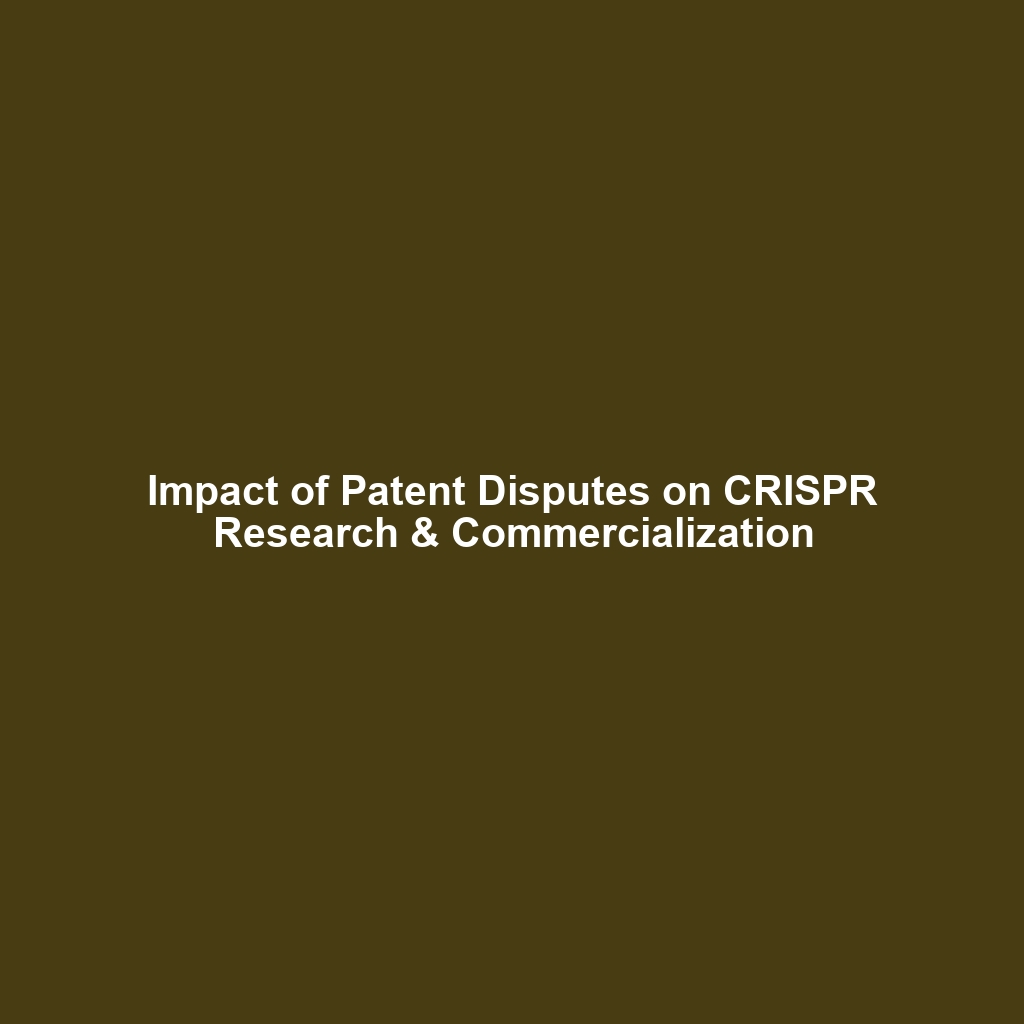How Patent Disputes Affect CRISPR Research and Commercialization
The ongoing patent disputes surrounding CRISPR gene editing technology have profound implications for research and commercialization in the field of genetic engineering. As the technology advances, establishing intellectual property rights becomes crucial for fostering innovation while also shaping the industry landscape. Understanding how these patent battles influence scientific progress and market access is vital for stakeholders ranging from researchers to investors and biotech companies. This article delves into the significance of these disputes within the broader context of CRISPR gene editing.
Key Concepts of Patent Disputes in CRISPR Gene Editing
Patent disputes in CRISPR research revolve around intellectual property rights for CRISPR-Cas9 technology, including its applications and methods. Key concepts include:
- Intellectual Property Rights (IPR): The legal rights granted to inventors to protect their inventions, which are crucial for securing funding and exclusive rights to commercialize CRISPR inventions.
- Licensing Agreements: Contracts that can dictate how CRISPR technologies are used and shared among various research institutions and companies.
- Technological Advancement: The ability of researchers to navigate patent landscapes directly influences the speed and direction of innovations in CRISPR gene editing.
Applications and Real-World Uses of CRISPR Patent Outcomes
How the outcome of patent disputes impacts CRISPR research and commercialization has numerous real-world applications, particularly in the following areas:
- Agricultural Biotechnology: Farmers are using CRISPR techniques to develop crops that are more resistant to diseases and environmental stresses.
- Medical Therapeutics: Genetic therapies that utilize CRISPR technologies are being developed to treat genetic disorders, cancers, and infectious diseases.
- Biomanufacturing: Companies are applying CRISPR for efficient bio-manufacturing processes to produce pharmaceuticals and biofuels.
Current Challenges in CRISPR Gene Editing
Despite the potential of CRISPR, several challenges within the field arise from patent disputes:
- Barrier to Research Collaboration: Dispute over patents can hinder collaborative research efforts between institutions.
- Increased Costs: Licensing fees can drive up the cost of CRISPR research and commercialization.
- Regulatory Uncertainty: Ongoing legal battles can create confusion regarding regulatory compliance and compliance timelines.
Future Research and Innovations in CRISPR
Looking ahead, the resolution of patent disputes will likely lead to exciting innovations in CRISPR technology. Upcoming research may include:
- Next-Generation CRISPR Systems: Development of more precise gene-editing tools that improve specificity and reduce off-target effects.
- Combination Therapies: Using CRISPR alongside other treatment modalities, creating multifaceted approaches to genetic diseases.
- Global Accessibility: Efforts to make CRISPR technologies widely available through open-access licensing frameworks.
Conclusion
In conclusion, the outcomes of patent disputes have significant implications on the trajectory of CRISPR research and commercialization. As stakeholders in the biotechnology field continue to navigate the complexities of intellectual property rights, it is essential to foster an environment that promotes innovation while ensuring accessibility. For further reading on CRISPR technologies, explore related articles such as CRISPR Applications in Medicine and Ethical Considerations in Gene Editing.
